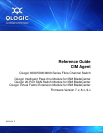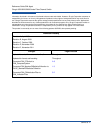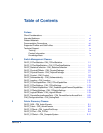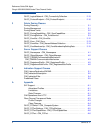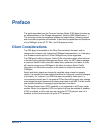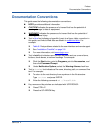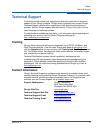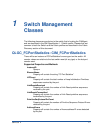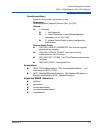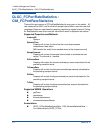
59223-03 E v
Preface
This guide describes how the Common Interface Model (CIM) Agent functions as
an implementation of the Storage Management Initiative (SMI)-Specification 1.1.
This manual provides the supported classes and associations, including custom
and overridden properties and methods. It also lists the capabilities and limitations
of the CIMAgent at the HTTP, XML, and CIM protocol levels.
Client Considerations
The CIM Agent is embedded in the Fibre Channel switch firmware, and so
changing the firmware may change the CIMAgent implementation, or if changing
to a firmware revision prior to 5.0 the CIMAgent may not be supported.
The CIMAgent is able to discover Fabric Profile information about other switches
in the fabric using standard Management Server calls. It is NOT able to manage,
or discover Switch Profile information about other switches in the fabric. A client
will need to contact every CIMAgent in the fabric to retrieve Switch Profile
information. An Ethernet connection to the switch is required to contact the
CIMAgent.
Switch and fabric objects are frequently identified using unique but opaque
values. It is possible for these opaque identifiers to change as a result of changes
to the fabric. For instance, if an HBA that was connected to switch port 1 is
re-connected to switch port 2, the opaque FCPort.DeviceID property may change
even though the object represents the same exact port on an HBA. A client should
use durable identifiers to manage physical devices in the fabric.
The Secure Socket Layer (SSL) capability is not supported on all QLogic switch
models. Where it is supported, SSL is an option that may be enabled or disabled.
If SSL is enabled, a client must connect using the HTTPS protocol, and if it is
disabled, a client must connect using the HTTP protocol.



